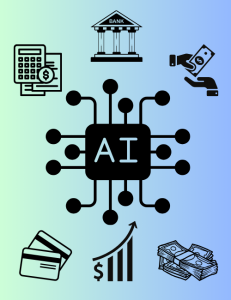Recently, I was reading the Global Banking Annual Review by McKinsey, which discussed the recently growing profits in the banking industry – especially highlighting how rising interest rates have contributed to the favorable wind in the industry’s sails. As the research delves deeper into various indicators such as Return on Equity, Price to Book ratio, and other movements, it becomes clearer than ever that the Banking, Financial Services, and Insurance (BFSI) sector is entering a new era. Entering fast-growing markets alone no longer seems to give you the competitive edge. The convergence of market performances and the rise of digital banking have indeed leveled the playing field. High-performing banks in slow-growth markets, driven by digital innovation and agile strategies, are redefining success. They seem to achieve this through adopting effective business models and embracing digital transformation to sustain profitability and attract investors.
 So, as the world celebrates the promise of Generative AI (GenAI), I believe that the BFSI industry should not just view this as an opportunity to enhance productivity and innovation but also to redefine the very essence of banking services and customer interactions. AI has shown great capabilities in automating complex processes, personalizing customer experiences, and uncovering new opportunities for growth. As leaders in the space, we owe it to our customers to reimagine what’s possible – and to do this with the strength of AI. If I have caught your attention this far, I invite you to hear me out and share your thoughts on some of the opportunities, challenges, and considerations in Generative AI for BFSI.
So, as the world celebrates the promise of Generative AI (GenAI), I believe that the BFSI industry should not just view this as an opportunity to enhance productivity and innovation but also to redefine the very essence of banking services and customer interactions. AI has shown great capabilities in automating complex processes, personalizing customer experiences, and uncovering new opportunities for growth. As leaders in the space, we owe it to our customers to reimagine what’s possible – and to do this with the strength of AI. If I have caught your attention this far, I invite you to hear me out and share your thoughts on some of the opportunities, challenges, and considerations in Generative AI for BFSI.
First things first though, people often misunderstand what Generative AI is all about. What we have all seen in movies like I Robot, Ex Machina, Terminator are all the scriptwriter’s take on Artificial General Intelligence (ability for AI to perform better than humans on a wide range of cognitive tasks) and Artificial Super Intelligence (hypothetical software-based AI with intellectual scope beyond human intelligence). While it would be fascinating, and maybe even worrying for a technology buff like me to live amongst robots like these – the growing interest that we have been seeing around the world since 2023, is more about Generative AI. GenAI is a subset of Artificial Intelligence that excels at creating new content, ranging from text to visuals, by analyzing large datasets. Such technologies, especially deep learning models (which is the broader category of AI that also includes Large Language Models), learn from large volumes of data to generate outputs that closely resemble the original, proving essential for creative and innovative applications like content creation and enhancing customer engagement – bringing a depth of interaction and understanding that remarkably mirrors human cognition.
In this blog, we will look at the opportunities that Generative AI brings to the BFSI sector, the challenges that often hold everyone back, and some recommendations on how to steer through these challenges to see some benefits.
The Opportunity

Personalization
One of the most significant benefits of GenAI that we have seen is in how it seems to be revolutionizing every industry it touches through automating and personalizing customer service through chatbots and virtual assistants. It means that you can be there when the customer needs you – offering round-the-clock support and tailored advice, significantly enhancing customer satisfaction and loyalty. GenAI’s capability in personalizing financial products and services helps align offerings more closely with individual customer needs and preferences, thereby deepening customer relationships.
Operational Efficiency
The next significant opportunity lies in how GenAI is transforming the operational efficiency of BFSI institutions. By automating back-office tasks, such as insurance claim processing, banks, and insurance companies can significantly reduce operations costs while boosting efficiency. As global citizens, when financial transactions get more complex by the day, AI’s role in risk assessment cannot be understated. Thanks to all the models, we are able to improve the accuracy of credit scoring and fraud detection through deep analysis of extensive datasets, ensuring safer and more reliable financial transactions.
Being in step with the customer, in real-time
Advances in database technologies and computing power availability now enable us to make real-time decisions and innovate product development by leveraging insights from customer data. This real-time insight is enabling institutions to excel in trading and investments with unprecedented speed and accuracy. The predictive analytics capabilities are also enabling them to enhance client engagement and offer cutting-edge products and services.
The Challenges
Though it looks like GenAI is godsent and the answer to any of our growth concerns, the adoption of GenAI in the BFSI sector faces several key challenges, each requiring careful consideration and strategic planning:
Insufficient Expertise and Resources
 Many institutions continue to report a lack of internal expertise as a significant barrier to establishing dedicated GenAI teams (Bank of England, Feedback Statement Oct ’23). The lack of internal expertise and dedicated GenAI teams poses a significant hurdle for financial institutions. To fully harness GenAI’s potential, organizations must invest in upskilling their workforce and allocate sufficient resources. Without knowledgeable teams, innovation and effective deployment remain elusive.
Many institutions continue to report a lack of internal expertise as a significant barrier to establishing dedicated GenAI teams (Bank of England, Feedback Statement Oct ’23). The lack of internal expertise and dedicated GenAI teams poses a significant hurdle for financial institutions. To fully harness GenAI’s potential, organizations must invest in upskilling their workforce and allocate sufficient resources. Without knowledgeable teams, innovation and effective deployment remain elusive.
The starting point here is really the obvious one of investing in training your team. Ensure that they understand the GenAI technology and tool offerings, and are able to integrate these AI Models or Co-Pilots into their own areas of businesses effectively. Also remember that this should not be treated as a one-off exercise. The field of GenAI is growing and changing so rapidly that it is always important to ensure that there is ongoing learning. Encouraging knowledge sharing across departments as well as creating inter-disciplinary teams where possible also would nurture that culture of collaboration.
Another thing to keep in mind is that even though it sounds like a plug to our own business and offerings, reaching out to experts to help reduce the time to value or learning curve associated with AI. Andrew Forbes recently wrote about Generative AI’s role in accelerating project delivery on forbes.com. Andy stressed about the need to establish AI expertise by upskilling, hiring or partnering with external consultants. He said: “This expertise will be crucial in evaluating AI solutions, understanding technical requirements and effectively integrating AI technologies into existing systems.”
Cost and Budget Constraints
 The second most significant obstacle I’ve encountered is the costs associated with implementing GenAI. Economic realities dictate stringent budgets, often limiting the scope and speed of GenAI adoption. Additionally, the rapid adoption of this technology has left many organizations without the opportunity to allocate funds towards GenAI in their budgets. If it provides any reassurance, this concern isn’t isolated; a significant number of leaders I’ve connected with over the last few months have acknowledged that implementation costs are a critical hurdle.
The second most significant obstacle I’ve encountered is the costs associated with implementing GenAI. Economic realities dictate stringent budgets, often limiting the scope and speed of GenAI adoption. Additionally, the rapid adoption of this technology has left many organizations without the opportunity to allocate funds towards GenAI in their budgets. If it provides any reassurance, this concern isn’t isolated; a significant number of leaders I’ve connected with over the last few months have acknowledged that implementation costs are a critical hurdle.
Strategic planning is required to ensure that AI teams rigorously optimize their models for computational efficiency, establish optimum hardware, and intelligently review content across the organization. From a Return on Investment perspective, it’s always worth remembering that we don’t necessarily need the most complex and highly performing models to bring value back to the business. Implementing a ‘taster’ AI module into your business processes can yield success by gaining value from automation, simplification, or improving the productivity of your teams.
Legacy Technological Infrastructure
 Another significant barrier, which is probably one of the most common challenges for BFSI institutions, is the outdated and highly customized technological infrastructure pervasive in many organizations. These legacy systems, characterized by inefficient data flows, complicate the integration of advanced GenAI solutions.
Another significant barrier, which is probably one of the most common challenges for BFSI institutions, is the outdated and highly customized technological infrastructure pervasive in many organizations. These legacy systems, characterized by inefficient data flows, complicate the integration of advanced GenAI solutions.
Overcoming this requires a dual approach: modernizing existing infrastructures and adopting flexible GenAI technologies designed for compatibility with a range of systems. Initiatives to upgrade technological frameworks not only facilitate GenAI integration but also bolster overall operational efficiency, preparing institutions for future innovations.
This concern is well-known to technology players in the market, and they are updating their product offerings to help. For example, Azure Synapse Analytics from Microsoft combines big data and data warehousing. Institutions can start small, analyze vast datasets, and gain valuable insights – all while running along legacy systems. Similarly, Azure Databricks, an Apache Spark-based platform, enables advanced analytics and machine learning that can be started off on the cloud with minimal investments.
Regulatory Uncertainty and Risk
 As financial institutions increasingly embrace artificial intelligence (AI) and machine learning (ML) solutions, ethical considerations become more important than ever. While GenAI promises efficiency, improved decision-making, and enhanced customer experiences, it also raises critical questions about fairness, transparency, and accountability.
As financial institutions increasingly embrace artificial intelligence (AI) and machine learning (ML) solutions, ethical considerations become more important than ever. While GenAI promises efficiency, improved decision-making, and enhanced customer experiences, it also raises critical questions about fairness, transparency, and accountability.
It’s important to remember that AI algorithms can inherit biases present in historical data. If these biases are not identified and corrected, they can perpetuate discrimination. Applicable to every industry, but BFSI institutions must actively monitor and mitigate bias to ensure fair treatment of all customers, regardless of their background or demographics.
Additionally, the “black box” nature of some AI models makes it challenging to understand how decisions are reached. Institutions should strive for transparency by using interpretable models, providing clear explanations, and disclosing the use of AI to customers. It is also critical to remember that data protection regulations (such as GDPR) and customer privacy should be handled carefully when handling sensitive customer information.
Cathy O’Neil’s book Weapons of Math Destruction is a good read if you would like to understand the impact of algorithms in the industry. There is one particular quote in that book that has always got me reflecting – “Models are opinions embedded in Mathematics”
Five Recommendations
All said and done, GenAI is still such an important pivot point that could enable us to make a difference in the BFSI sector. Here are five takeaways that I would strongly urge you to consider. I would love to hear how this aligns with your list and if there are any suggestions here that have not worked for you.
- Invest in Talent and Training: Prioritize hiring and developing internal expertise in GenAI. Offer continuous learning opportunities for your staff to stay abreast of the latest advancements in AI technologies. AI boot camps, offsite workshops, or even lunch and learn sessions are easy ways to organize this.
- Foster Partnerships: Remember that brilliant idea that you have? Chances are that someone else has already had it and has an even more brilliant solution for it! So, collaborate with tech companies and startups that specialize in GenAI to access cutting-edge solutions and insights. This can also help in navigating the complexities of implementing GenAI within existing systems.
- Implement a Phased Approach: I couldn’t stress more on this. Don’t wait for the big projects to get planned and completed. Start with pilot projects to understand the implications of GenAI in your operations. You can always scale successful pilots to larger operations while managing risks effectively.
- Focus on Data Management: This is a golden rule that is never likely to go wasted. Ensure that the data in your organization is reviewed for quality and constantly enhanced. Make the data more accessible to the organization to seek more feedback. Remember, GenAI’s effectiveness is heavily dependent on the data it’s trained on. Invest in robust data governance frameworks.
- Cultivate an Innovation Culture: Encourage a culture that embraces change and innovation, making it easier to integrate new technologies like GenAI into your business model. Conduct hackathons – potentially co-host this with tech companies to bridge the talent and technology gaps. If nothing else, your teams will love you for being innovative and creative at work!
Thank you for taking the time to explore the transformative potential of Generative AI (GenAI) in the BFSI sector with me. I’m eager to hear your insights and perspectives on how Generative AI can reshape banking services and customer interactions. Please feel free to share your thoughts and comments on the opportunities, challenges, and recommendations discussed above.

